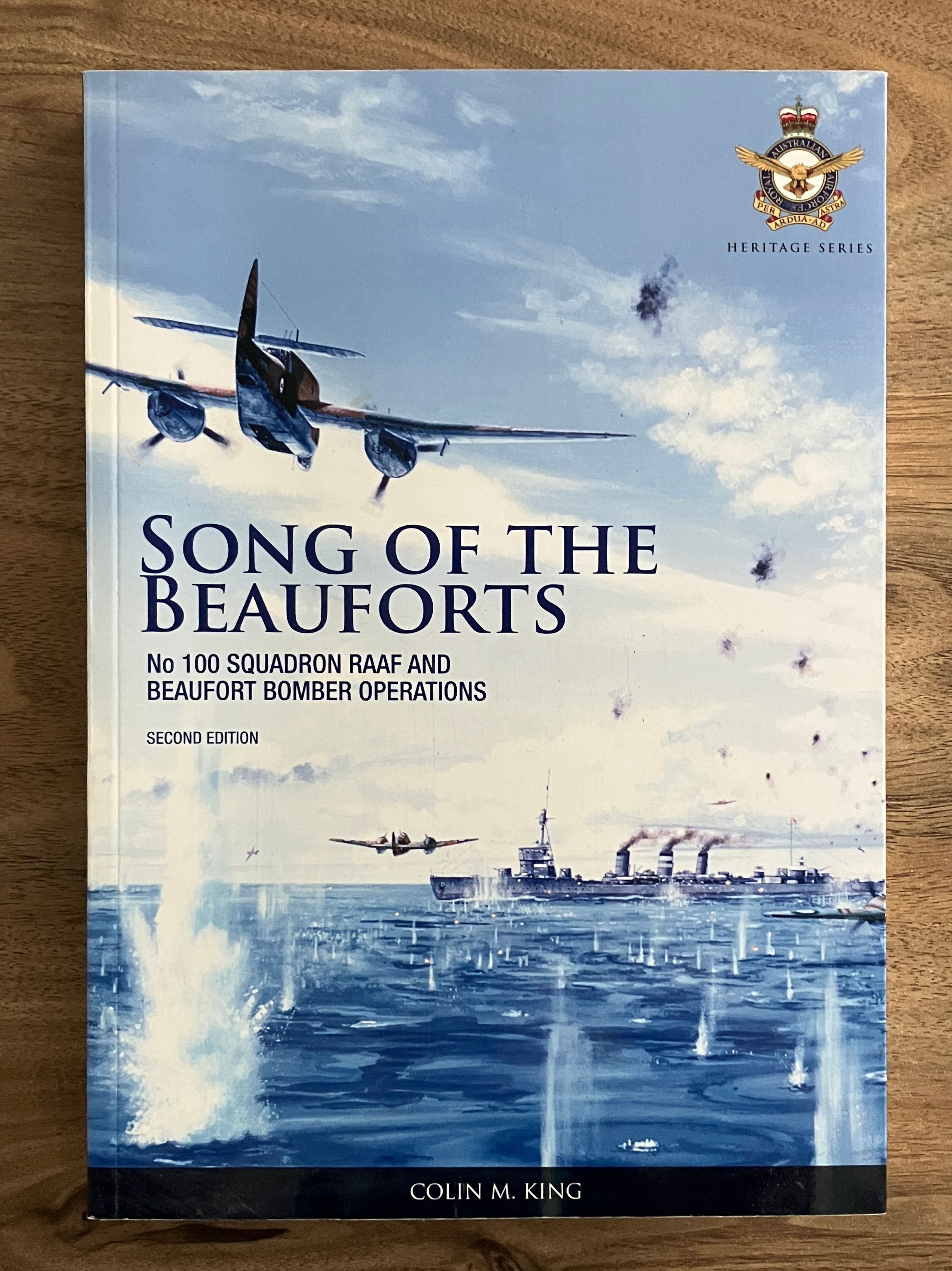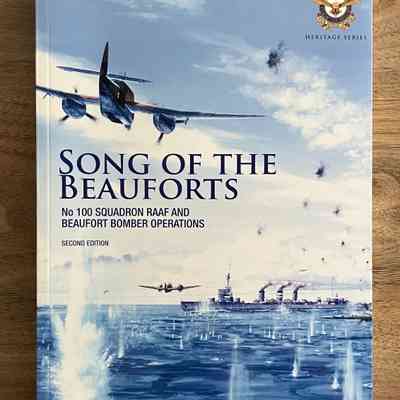Song of the Beauforts

2023.221
Second edition.
Name/Title
Song of the BeaufortsEntry/Object ID
2023.221Description
This book records the exploits of the airmen of the first Australian Beaufort squadron in action in World War II. The history of No. 100 Squadron RAAF. No. 100 Squadron was formed at RAAF Base Richmond on 15 February 1942. The Squadron was formed from a nucleus of No. 100 Squadron RAF, which had been destroyed during the Malayan Campaign, and was named in this Squadron’s honour. Despite this link No. 100 Squadron RAAF was an Australian squadron throughout its existence and should not be confused with its British namesake, which was re-formed as a heavy bomber squadron in Britain on 15 December 1942. Flying from bases in Queensland and staging through Port Moresby, No. 100 Squadron flew its first combat missions in June 1942, making it the first of the RAAF’s Beaufort bomber-equipped squadrons to see combat. After completing its training, the Squadron deployed to Milne Bay in New Guinea in October 1942. In October 1942, while participating in a training exercise off the coast of Townsville, Beaufort A9-26 of the No. 100 Squadron struck the mast of the wrecked SS City of Adelaide in Cockle Bay, Magnetic Island. The aircraft plunged into the shallow water below and the fuselage disintegrated on impact killing three RAAF officers and one US Navy Officer aboard. Flying from bases in eastern New Guinea No. 100 Squadron flew reconnaissance patrols and anti-shipping and bombing missions against the Japanese in the Solomon Islands and New Guinea mainland. While the squadron participated in the Battle of the Bismarck Sea it was not successful in sinking any ships in this battle and operated solely in the level bombing role from March 1943. As a level bomber squadron No. 100 Squadron conducted bombing missions against Japanese facilities throughout New Guinea and surrounding islands, including the key base at Rabaul. The Squadron continued in this role until the end of the war and was disbanded at Finschafen on 19 August 1946.Category
Book, War Memorabilia
Publications
